First Drive: Hyundai’s i30 Fastback brings flair to a dependable package
We get behind the wheel of Hyundai’s sleek take on its i30 hatchback

What is it?
Fastback might not be a term you’re familiar with, but essentially it’s a hatchback crossed with a saloon, often with swoopy details to almost make it look like a coupe.
In the UK, the only other car marketed specifically as a fastback is the Mazda 3, although that’s a saloon. Now, though, it’s time for Hyundai to delve into this teeny tiny sector with its i30 Fastback, adding further appeal to the popular model.
Hyundai says the Fastback is the “final model” to be added to the i30’s line-up and comes with a “distinct character”, which we’ll test.
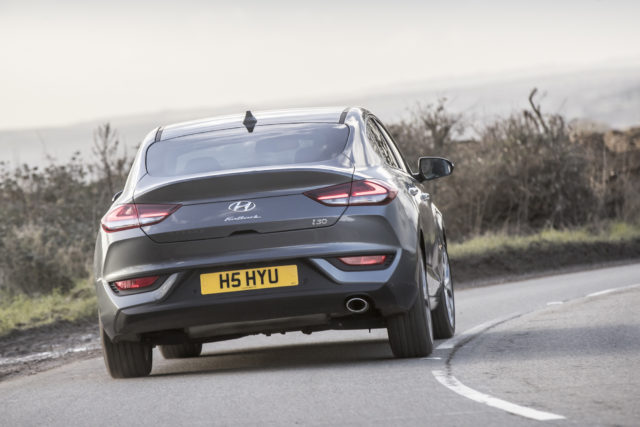
What’s new?
The Fastback is noticeably an i30, both in terms of design and functionality. Both the interior and engine choices remain hardly unchanged compared to the estate and hatch, so the main differences come via its looks.
A lower roofline gives the i30 a more coupe-like character, while a tapered rear windscreen integrates well into a rear ducktail-style spoiler.
The front grille has also been altered, being reduced in size to give it a wider stance. It also features revised LED daytime running lights, a front roof spoiler and altered air intakes. Two new alloy wheel designs are also exclusive to the Fastback. The final differences over the hatchback and estate are a new front bumper and slightly tinted front lights.
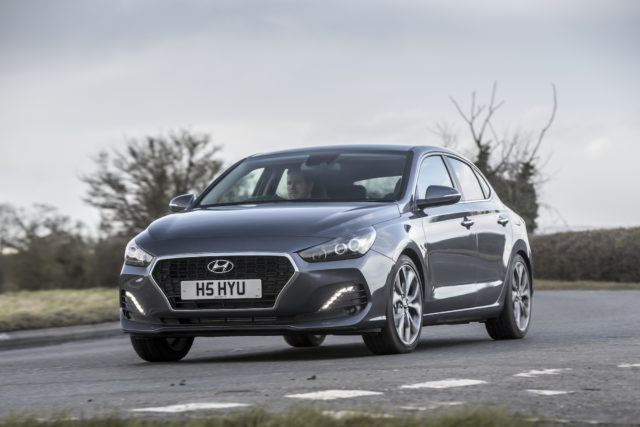
What’s under the bonnet?
There are only two engines on offer in the i30 Fastback. Our test car was fitted with the cheaper of the two – a 118bhp, 1.0-litre petrol with three cylinders. It’s the same unit as fitted to much of Hyundai and Kia’s current range and offers average performance – though it’s rather lacking in low-end grunt. It is however refined on the motorway and efficient, with a claimed fuel economy figure of 54.3mpg.
The higher-powered 138bhp 1.4-litre is a reasonably priced upgrade, and is also the only way to get an automatic gearbox – the 1.0-litre is mated exclusively to a six-speed manual.
Sad news is the lack of an ‘N’ model. The i30 N hatch is a stonkingly good car, and an i30 N Fastback would add a layer of coupe-style sophistication while retaining the hatchback’s driving dynamics. There’s also no diesel on offer.
What’s it like to drive?
The i30 Fastback’s chassis has been stiffened up ever so slightly over the regular hatchback’s, and while it’s certainly not enough to transform the car into a B-road stormer, it endows the Fastback with just a little extra ability when things get twisty. Despite the changes, the i30’s suspension remains compliant enough over imperfections in the road to remain comfortable, and this means that there shouldn’t be any complaints from the vehicle’s occupants – be that driver or passengers.
Our test car came with a six-speed manual, and we’d argue that it’s the best option for the i30 – the optional automatic doesn’t quite suit the character of the car, and can be a little dim-witted at times.
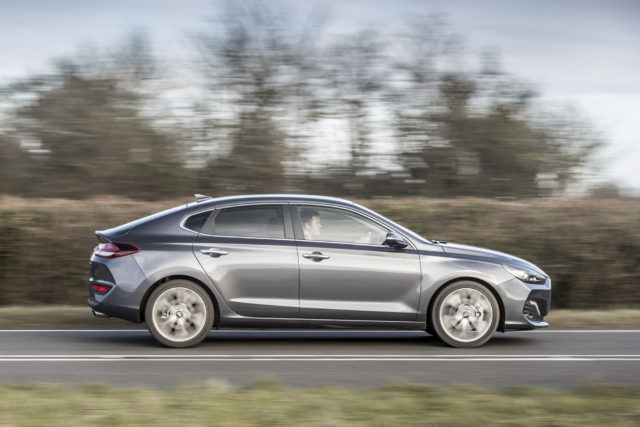
How does it look?
Of all the i30 models (minus the N), the Fastback is the smartest to look at. The hatchback and estate models are both practical cars but are devoid of any visual excitement. Thankfully, the Fastback fills that gap.
While the Fastback is hardly a revolution in design, the rear end is where the main differences lie. The roofline is 30mm lower than the hatch, while a tapered rear windscreen looks the part, particularly as the rear integrates into a roof spoiler. It certainly adds some well-need flair to the i30 range and should get a few showroom browsers into it, based purely on its looks alone.
The only gripe with it is that while it might look smart, it makes it less practical than the standard hatch – limiting its appeal and functionality.
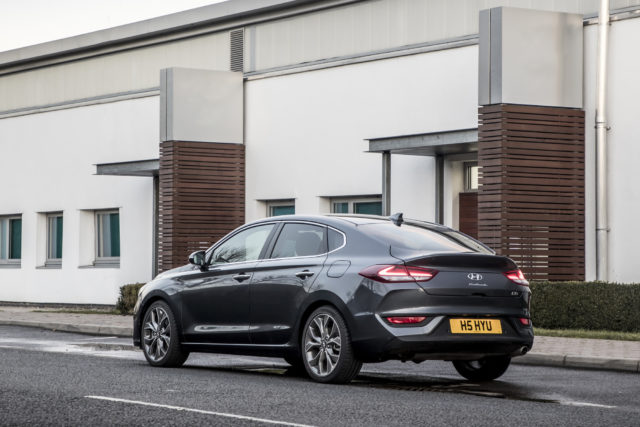
What’s it like inside?
The interior of the i30 Fastback offers up everything we’ve come to expect from the South Korean manufacturer; decent build quality, relatively high levels of standard equipment, all of which is wrapped up in plastics which are on-par for the segment. The overall feel of the cabin isn’t bristling with excitement, mind you, but then everything works well and feels built to last.
Even base-spec cars get electronic lumbar control for the driver’s seat, meaning that it should be easy to get comfortable behind the wheel. You’ve also got the choice of two different interior upholstery colours – and both are no-cost options.
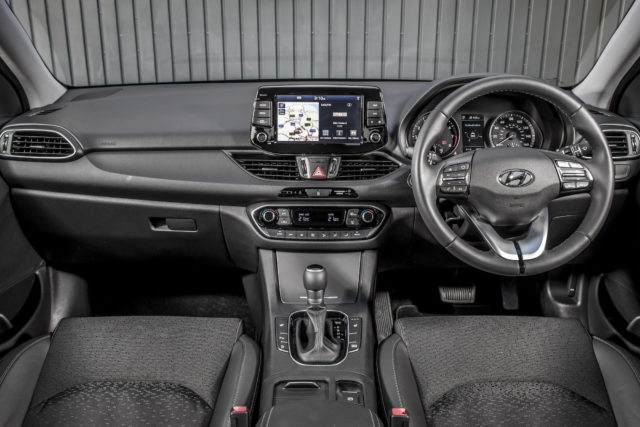
What’s the spec like?
As the ‘premium’ offering in the i30 range, the Fastback’s trim levels start a few grades up from the hatchback. The range kicks off with SE Nav, which offers all the basics – 17-inch alloy wheels, LED daytime running lights, all-round electric windows, a rear=view camera and an 8-inch infotainment display with sat-nav, Android Auto and Apple CarPlay.
Make the £1,800 leap up to Premium and you’ll gain niceties such as dual-zone climate control, heated front seats, LED head and taillights and faux leather upholstery, while a further £1,300 gives you real leather, a panoramic glass roof and a heated steering wheel.
Hyundai’s typically limited range of optional extras means that, for the most part, the price you see is the price you’ll pay.
Verdict
The Hyundai i30 Fastback manages to take a car that’s dependable, well-valued yet quite good to drive and brings a sense of flair to the occasion.
Ok, so the term ‘Fastback’ might give you images of something Mustang-esque and this new look alone isn’t enough to make this a more sporty machine, but it is stylish and genuinely good looking.
If practicality is a concern, sticking with the regular i30 hatch might be your best bet but if you can sacrifice that a little — you won’t be going wrong buying a Fastback.





